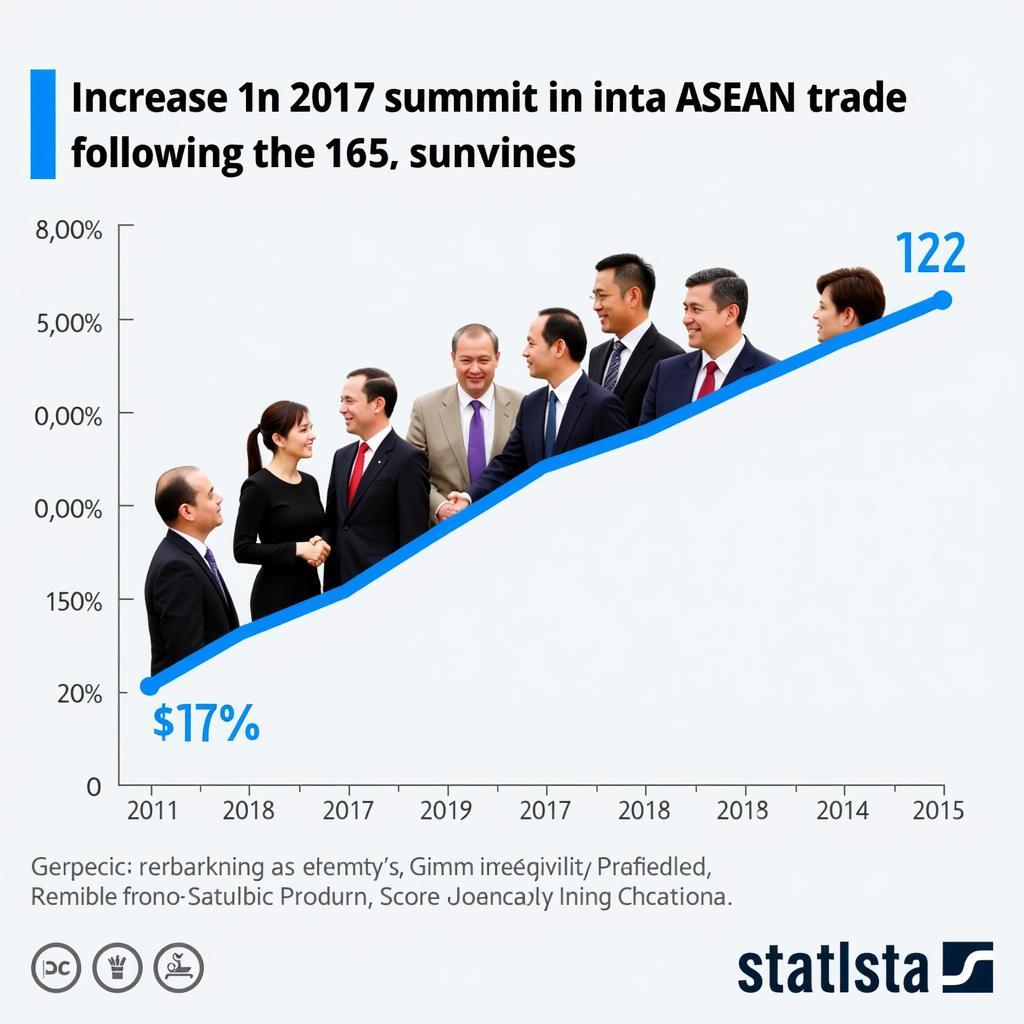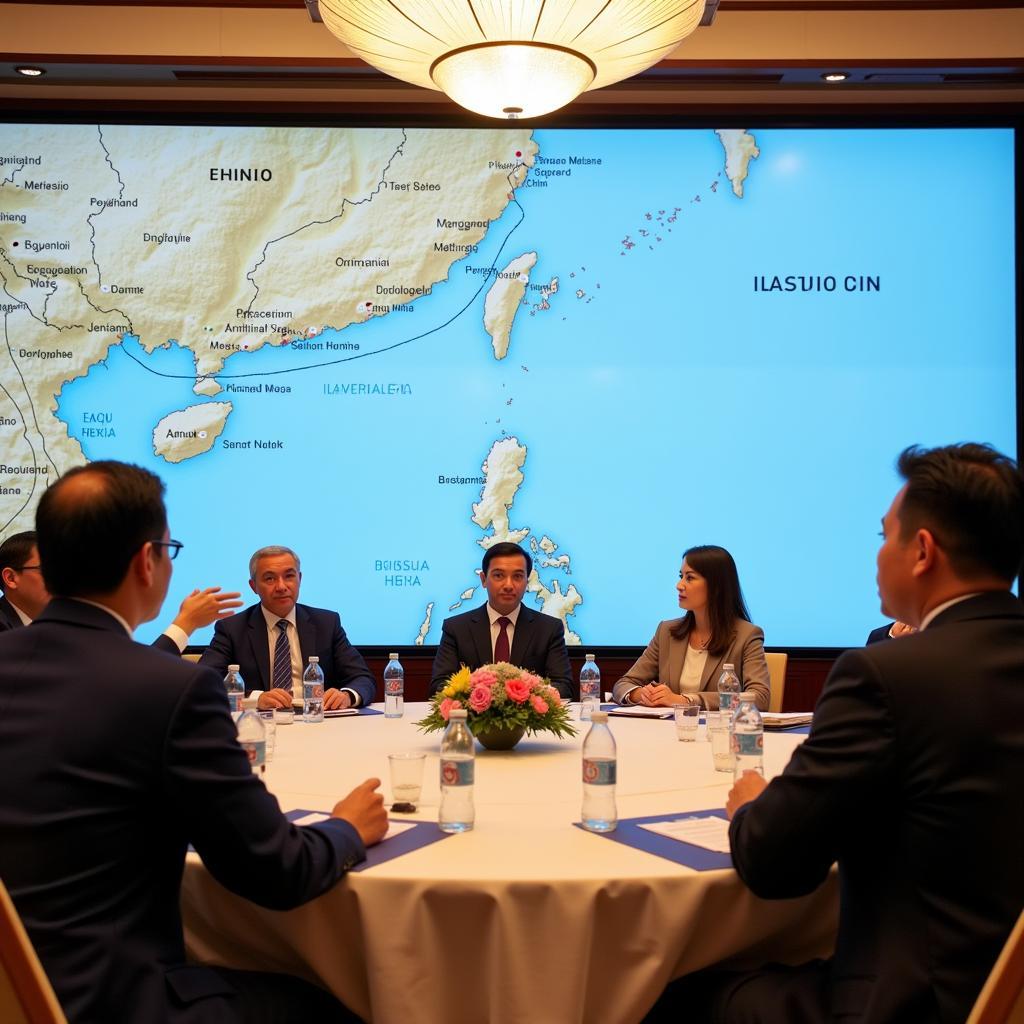The ASEAN Summit 2017 held in Manila, Philippines, brought together Southeast Asian leaders to discuss critical regional issues. Understanding the advantages and disadvantages of the summit is crucial for grasping its impact on the region and its member states. This article will delve into the key outcomes, both positive and negative, of the 2017 ASEAN Summit.
Economic Cooperation and Regional Integration: A Boon for ASEAN?
The 2017 summit saw significant strides in economic cooperation. Agreements were reached to further integrate ASEAN economies, promoting trade and investment within the region. The summit reiterated the commitment to the ASEAN Economic Community (AEC), aiming to create a single market and production base. This push for greater integration is seen as a crucial advantage, promising increased economic activity and prosperity for member states. The summit also addressed non-tariff barriers and streamlined customs procedures, facilitating smoother cross-border trade.
However, critics argue that the benefits of economic integration are not evenly distributed among ASEAN members. Smaller economies often struggle to compete with larger, more developed nations within the bloc. Concerns remain about the potential for increased economic inequality and the exploitation of resources in less developed nations.
 ASEAN Economic Integration at the 2017 Summit
ASEAN Economic Integration at the 2017 Summit
Security Challenges and the South China Sea Dispute: A Thorny Issue
The 2017 summit grappled with the ongoing South China Sea dispute, a major security challenge for the region. While a joint statement acknowledged the importance of maintaining peace and stability, concrete solutions remained elusive. The summit highlighted the need for a Code of Conduct in the South China Sea, but progress on this front remained slow. Some viewed the summit’s inability to effectively address this critical security issue as a significant disadvantage. The lack of a unified stance against China’s assertive actions in the disputed waters underscored the divisions within ASEAN and the challenges of achieving consensus on sensitive geopolitical issues.
On the other hand, the summit did reaffirm the commitment to international law and the peaceful resolution of disputes, providing a platform for dialogue and diplomacy. This continued engagement, despite disagreements, is seen as a crucial step in managing tensions and preventing escalation in the South China Sea.
 Discussion on the South China Sea at the ASEAN Summit 2017
Discussion on the South China Sea at the ASEAN Summit 2017
Socio-Cultural Cooperation and People-to-People Connectivity: Strengthening Regional Identity
The summit emphasized the importance of socio-cultural cooperation and people-to-people connectivity. Initiatives were launched to promote cultural exchange, education, and tourism within the region. These efforts aim to strengthen ASEAN identity and foster a sense of community among its diverse populations. The focus on people-to-people connections is considered a major advantage of the summit, as it promotes understanding and cooperation at the grassroots level.
However, some argue that the emphasis on regional identity could overshadow national identities and cultural diversity. Concerns remain about the potential for cultural homogenization and the loss of unique traditions and practices within individual member states.
Conclusion
The ASEAN Summit 2017 presented both advantages and disadvantages for the region. While progress was made in areas such as economic cooperation and socio-cultural exchange, challenges remained in addressing critical security issues like the South China Sea dispute. The summit underscored the complexities of regional integration and the need for continued dialogue and cooperation to address the diverse interests and concerns of ASEAN member states.
FAQ
- What were the main topics discussed at the ASEAN Summit 2017?
- What were the key outcomes of the summit regarding economic cooperation?
- How did the summit address the South China Sea dispute?
- What initiatives were launched to promote socio-cultural cooperation?
- What were some of the criticisms of the summit?
- What is the ASEAN Economic Community (AEC)?
- How does the summit contribute to regional integration?
Need support? Contact us 24/7: Phone: 0369020373, Email: [email protected], or visit us at: Thon Ngoc Lien, Hiep Hoa, Bac Giang, Vietnam.

